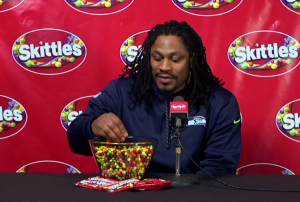In one of my previous blog posts I discussed how certain types of music had the ability to get us out of bed in the morning and get us started for the rest of the day, but can it heal us? Many of us know that our favorite tunes can make us feel calm and reduce stress, it may even cure a broken heart! Research has found that music’s abilities go beyond that to help humans be cured of certain diseases.
One of these diseases in which music made the sufferer feel better is Parkinson’s disease. Researchers claim that the vibrations in certain music types made the Parkinson’s less severe. In an experiment in which 40 patients with the condition were exposed to one minute increments of low frequency 30-hertz vibration on and off for 10 minutes, most of them reported feeling reduced symptoms. This is very promising that it is possible to develop some sort of vibration therapy to help with the unfortunate disease. One problem I have with this study is that it was too black and white. Instead of exposing the patients to only 30-hertz vibrations for one minute, scientists should have experimented with other vibrations: fast and slow, for more extended periods of time. If they committed to more varied trials, the results could have been significantly more satisfying in that they could additionally decipher exactly which of the vibrations could help the patients the most.
Perhaps an even more significant trial was conducted on patients of Alzheimer’s disease. In this experiment the patients were exposed to 40-hertz sounds this time for 30 minutes a few times a week. After this so called “vibroacoustic therapy”, patients seemed to be improved in their condition. In one particular instance, one woman “could recall the names of her grandchildren more easily, and her husband reported good improvement in her condition.” Again with this trial, I think more could have been done to see which frequency within the vibroacoustic therapy worked the best with Alzheimer’s patients. Then, the therapy could therefore be perfected and used in regular practice to treat patients.
We know that our favorite songs can help feel better if we are feeling depressed or anxious, but this evidence proves that certain sounds and vibrations have the ability to heal physical diseases just as well as everyday mental shortcomings.









